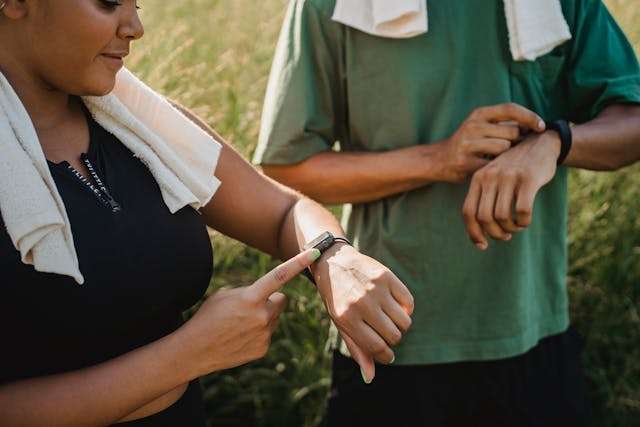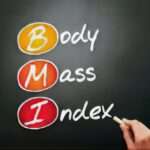Table of contents
Introduction

In today’s health-conscious world, understanding weight management is essential for many individuals striving to achieve their fitness goals. One valuable metric that can guide this journey is the Estimated Body Weight Loss (EBWL). This measurement provides insight into how much weight one aims to lose, helping to set realistic and achievable targets.
EBWL is particularly beneficial for those embarking on weight loss programs, fitness enthusiasts, and healthcare professionals seeking to assess progress. By calculating EBWL, individuals can gain a clearer picture of their weight loss objectives, allowing for better planning and motivation. Whether you’re looking to shed a few pounds or embark on a significant weight loss journey, understanding EBWL can help you navigate the path to your goals with confidence.
What is EBWL?

Estimated Body Weight Loss (EBWL) refers to the anticipated reduction in body weight that a person aims to achieve over a specific period. This measurement serves as a benchmark for individuals working toward weight loss, allowing them to track their progress and make necessary adjustments to their goals and strategies.
EBWL is not merely a number; it encapsulates the idea of setting realistic and healthy weight loss targets based on various factors, including an individual’s initial body weight, health status, and lifestyle. Unlike the number on the scale alone, which can fluctuate due to various factors, EBWL focuses on the desired weight loss outcome, promoting a more holistic view of health and fitness.
In practical terms, calculating EBWL involves determining the difference between an individual’s initial body weight (IBW) and their target body weight (TBW). This process provides clarity on how much weight a person aims to lose, encouraging a focused approach to achieving their health and fitness aspirations.
Understanding EBWL is crucial for anyone looking to lose weight, as it helps to set tangible goals that can be realistically met while considering overall health and well-being.
Why Calculate EBWL?

Calculating Estimated Body Weight Loss (EBWL) is vital for several reasons, particularly for those embarking on weight loss journeys or striving to maintain a healthy lifestyle. Here are some key reasons why understanding and calculating EBWL is beneficial:
- Setting Realistic Goals: EBWL helps individuals set achievable weight loss targets that are grounded in their current weight and health status. By having a clear understanding of how much weight they intend to lose, individuals can establish more practical, sustainable goals, reducing the likelihood of frustration and disappointment.
- Tracking Progress: Regularly calculating EBWL allows individuals to monitor their progress over time. This ongoing assessment helps identify patterns, encouraging individuals to stay committed to their weight loss efforts. Tracking progress can also boost motivation, as seeing tangible results reinforces the effectiveness of their strategies.
- Personalized Approach: Weight loss is not a one-size-fits-all endeavor. Calculating EBWL enables individuals to tailor their approach to their unique circumstances, such as lifestyle, metabolism, and health conditions. This personalization increases the chances of long-term success, as individuals can adapt their plans based on what works best for them.
- Promoting Accountability: When individuals have a specific EBWL target in mind, it fosters accountability. They are more likely to take ownership of their weight loss journey and make healthier choices in their daily lives, knowing they are working toward a defined goal.
- Enhancing Health Outcomes: Understanding EBWL can also help individuals focus on the health benefits of weight loss, such as improved energy levels, reduced risk of chronic diseases, and enhanced overall well-being. By emphasizing health over aesthetics, individuals may find more satisfaction in their weight loss journey.
Factors Influencing EBWL

When calculating Estimated Body Weight Loss (EBWL), it’s important to recognize that several factors can influence both the amount of weight an individual aims to lose and the ease with which they can achieve that goal. Understanding these factors can help individuals set realistic expectations and tailor their weight loss strategies effectively. Here are some key factors to consider:
- Initial Body Weight (IBW): An individual’s starting weight plays a significant role in determining their EBWL. Generally, those with a higher initial weight may have a greater potential for weight loss, while those closer to their ideal weight may find it more challenging to lose additional pounds.
- Age: Age affects metabolism and body composition. As people age, their metabolism tends to slow down, making weight loss more difficult. Older adults may need to adjust their EBWL targets accordingly, considering changes in muscle mass and activity levels.
- Gender: Biological differences between men and women can influence weight loss. Men often have a higher muscle mass, which can contribute to a faster metabolism, while women may experience hormonal fluctuations that can affect weight loss patterns. Understanding these differences can help tailor weight loss strategies.
- Activity Level: The amount and intensity of physical activity significantly impact weight loss. Individuals who engage in regular exercise are likely to lose weight more effectively than those who lead a sedentary lifestyle. Including both aerobic and strength-training exercises can enhance overall results.
- Metabolism: Metabolism varies from person to person and can be influenced by genetics, muscle mass, and hormonal balance. A higher metabolic rate allows individuals to burn calories more efficiently, affecting their weight loss potential and the timeline for achieving their EBWL.
- Health Conditions: Certain medical conditions, such as thyroid disorders, diabetes, and metabolic syndrome, can impact weight loss efforts. Medications used to treat these conditions may also affect body weight. It’s crucial for individuals with underlying health issues to consult healthcare professionals when setting EBWL targets.
- Dietary Habits: Nutritional choices play a pivotal role in weight loss. A balanced diet rich in whole foods, lean proteins, healthy fats, and fiber can support weight loss efforts, while excessive consumption of processed foods, sugars, and unhealthy fats can hinder progress.
- Psychological Factors: Mental health and emotional well-being can influence weight loss efforts. Stress, anxiety, and depression can lead to emotional eating or a lack of motivation to maintain healthy habits. Addressing these psychological factors is essential for successful weight management.
How to Calculate EBWL

Calculating Estimated Body Weight Loss (EBWL) involves a straightforward process that helps individuals determine their weight loss targets based on their current body weight and desired outcomes. Below is a step-by-step guide for calculating EBWL in both the metric and US customary systems.
Step-by-Step Guide
- Determine Your Initial Body Weight (IBW)
- Metric System: Measure your current body weight in kilograms (kg). Use a reliable scale and weigh yourself at the same time each day for consistency.
- US Customary System: Measure your current body weight in pounds (lbs). Again, ensure consistency by weighing yourself at the same time each day.
- Set Your Target Body Weight (TBW)
- Establish a realistic target body weight based on various factors such as your height, age, gender, and overall health. You can use tools like the Body Mass Index (BMI) calculator or consult with a healthcare professional to determine a healthy weight range for you.
- Metric System: Set your target in kilograms (kg).
- US Customary System: Set your target in pounds (lbs).
- Calculate the Estimated Body Weight Loss (EBWL)
- Metric System: Use the following formula to calculate your EBWL in kilograms:
EBWL (kg) = IBW (kg) – TBW (kg) - US Customary System: Use the following formula to calculate your EBWL in pounds:
EBWL (lbs) = IBW (lbs) – TBW (lbs) - Example Calculation:
- Metric: If your initial body weight is 90 kg and your target body weight is 75 kg, your calculation would be:
EBWL = 90 kg – 75 kg = 15 kg - US Customary: If your initial body weight is 198 lbs and your target body weight is 165 lbs, your calculation would be:
EBWL = 198 lbs – 165 lbs = 33 lbs
- Metric: If your initial body weight is 90 kg and your target body weight is 75 kg, your calculation would be:
- Metric System: Use the following formula to calculate your EBWL in kilograms:
- Consider Additional Factors
- While calculating EBWL provides a solid target, it’s essential to consider the time frame and sustainability of your weight loss goals. Aim for a gradual and healthy weight loss of about 0.5 to 1 kg (1 to 2 lbs) per week, which is generally considered safe and sustainable.
- Adjust your EBWL target if you find that your lifestyle or health conditions change over time.
Summary of Example Calculations
| System | Initial Body Weight | Target Body Weight | EBWL |
|---|---|---|---|
| Metric (kg) | 90 kg | 75 kg | 15 kg |
| US Customary (lbs) | 198 lbs | 165 lbs | 33 lbs |
Tracking Your Progress

Tracking your progress is a crucial component of any weight loss journey, as it helps you stay motivated and accountable while working toward your Estimated Body Weight Loss (EBWL) goals. Here are several effective methods and tips for monitoring your weight loss progress over time:
- Regular Weigh-Ins
- Establish a routine for weighing yourself, ideally at the same time each day or week. Consistency is key, so try to weigh yourself under similar conditions, such as after waking up and before eating.
- Use a reliable scale to ensure accuracy and record your weight in a journal or digital app for easy reference.
- Create a Weight Loss Journal
- Keep a dedicated journal to log your daily or weekly weight, dietary habits, exercise routines, and how you feel physically and mentally. This documentation can provide valuable insights into what strategies work best for you and where adjustments may be needed.
- Utilize Apps and Technology
- Consider using mobile apps or wearable devices designed for fitness and weight tracking. Many of these tools allow you to log your food intake, exercise, and weight changes, providing visual representations of your progress over time.
- Popular apps like MyFitnessPal, Lose It!, or Fitbit can help you stay organized and motivated.
- Monitor Measurements Beyond Weight
- While tracking your weight is important, it’s also beneficial to measure other metrics that reflect your health and progress. Consider measuring:
- Body Measurements: Track the circumference of your waist, hips, thighs, and arms to see changes in body composition.
- Body Fat Percentage: If possible, measure your body fat percentage using calipers, smart scales, or professional assessments. This can provide a clearer picture of your weight loss success, especially if you are gaining muscle.
- Fitness Performance: Monitor improvements in your physical fitness, such as increased endurance, strength, or flexibility. This can enhance your motivation and provide a sense of accomplishment.
- While tracking your weight is important, it’s also beneficial to measure other metrics that reflect your health and progress. Consider measuring:
- Set Milestones and Celebrate Achievements
- Break down your EBWL goal into smaller, manageable milestones. Celebrate each achievement, whether it’s reaching a certain weight, completing a workout challenge, or maintaining healthy eating habits for a set period.
- Acknowledging your successes can help reinforce positive behaviors and keep you motivated throughout your journey.
- Adjust Goals as Necessary
- As you track your progress, be open to adjusting your goals based on your experiences and outcomes. If you find that your initial EBWL target is too ambitious or unrealistic, recalibrate it to align better with your current situation and lifestyle.
- Regularly reassess your dietary habits, exercise routines, and overall health to ensure you’re on the right track.
Conclusion
Calculating and tracking Estimated Body Weight Loss (EBWL) is an essential part of any weight loss journey. By understanding what EBWL is, why it’s important, and how to calculate it, you can set realistic and achievable weight loss goals tailored to your individual needs. Moreover, monitoring your progress not only helps you stay accountable but also motivates you to maintain healthy habits and make informed adjustments along the way.
Remember, weight loss is a gradual process that requires patience, commitment, and a balanced approach to nutrition and physical activity. Celebrate your milestones, stay adaptable, and focus on overall health rather than just the numbers on the scale.
With the right strategies and mindset, you can successfully navigate your weight loss journey and achieve your desired outcomes.
Additional Resources
For more information on weight loss, health, and nutrition, consider exploring the following resources:
- Centers for Disease Control and Prevention (CDC): Healthy Weight
- This site provides information on healthy weight management, including tips, resources, and tools for tracking your progress.
- National Institutes of Health (NIH): Weight-Control Information Network
- A comprehensive resource offering guidance on weight control, dietary recommendations, and lifestyle changes.
- MyFitnessPal: MyFitnessPal
- A popular mobile app for tracking food intake, exercise, and weight loss progress.
- American Heart Association: Nutrition Center
- Access heart-healthy eating tips and resources to help you make better food choices.
- Academy of Nutrition and Dietetics: Eat Right
- A valuable resource for information on nutrition, healthy eating, and finding registered dietitians for personalized advice.
- Local Support Groups: Consider joining local or online support groups focused on weight loss. These communities can provide encouragement, shared experiences, and accountability.
By utilizing these resources, you can further empower yourself on your weight loss journey, gaining knowledge and support to achieve your EBWL goals effectively.
Frequently Asked Questions (FAQ)
EBWL is the estimated amount of weight an individual aims to lose based on their initial body weight and target body weight. It serves as a guideline for setting realistic weight loss goals.
To calculate your EBWL, subtract your target body weight (TBW) from your initial body weight (IBW) using the formula:
EBWL=IBW−TBW
This can be done in both metric (kg) and US customary (lbs) systems.
Tracking your weight loss progress is crucial for accountability and motivation. It helps you identify successful strategies, make necessary adjustments, and stay focused on your weight loss goals.
It’s recommended to weigh yourself consistently at the same time each day or week, preferably in the morning after waking up. This helps ensure accuracy and provides a clearer picture of your progress over time.
Several factors can influence your EBWL goals, including your initial body weight, age, gender, activity level, metabolism, dietary habits, health conditions, and psychological factors. Understanding these influences can help you set realistic and achievable targets.














